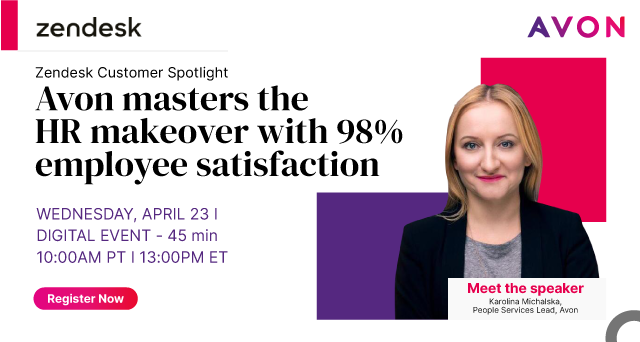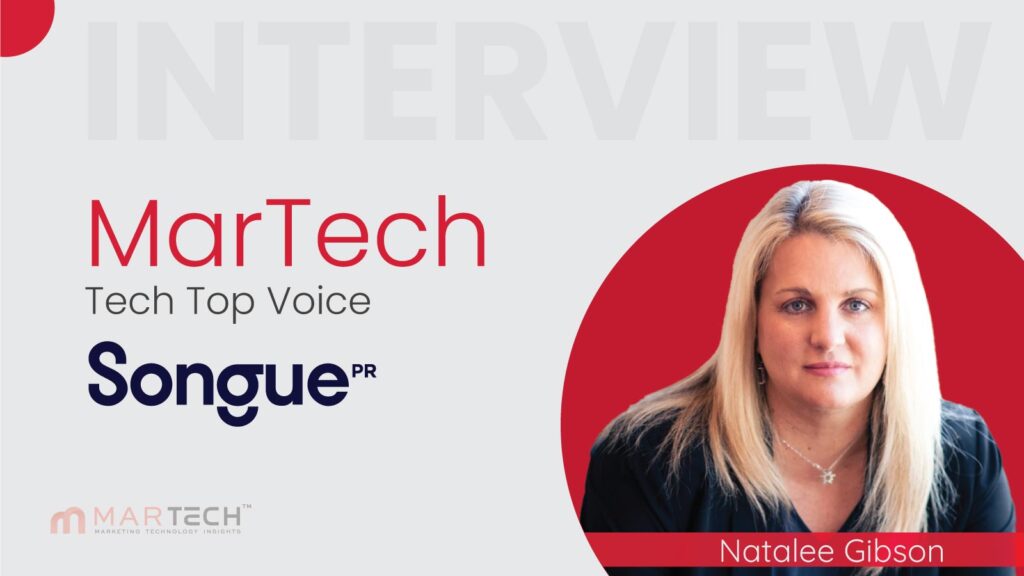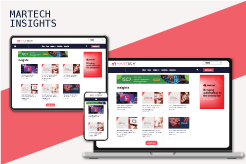Today’s MarTech Top Voice: Songue PR’s Co-founder and CEO Natalee Gibson.
We are excited to have our latest Martech guest, Natalee Gibson, Co-founder and CEO at Songue PR. In this discussion, Natalee dives into the current state of PR in the tech industry, exploring the evolving trends and the impact of emerging technologies like AI. Natalee shares her expert perspective on how PR strategies are adapting to the fast-paced digital landscape, highlighting what’s working for startups and established companies, as well as which traditional approaches are losing their effectiveness.
Join us as we dive into Natalee Gibson’s journey, co-founder of Songue PR.
MarTech Insights (MTI): Hi Natalee, welcome to the MarTech Top voice interview series. Can you tell us about Songue PR, provide a brief description on the services you offer and the companies you serve?
Natalee: Songue PR is a full service, boutique PR agency specializing in tech across a wide range of industries. Founded by Natalee Gibson and Lizi Sprague, Songue offers comprehensive PR services including media and analyst relations, content and thought leadership, speakers and awards programs and social media support. We work with clients of all sizes, from small startups to Fortune 100s, with particular speciality in helping to launch companies out of stealth or into new markets, amplify funding, and prepare for exit.
MTI: Can you provide examples of startups you have worked with and the outcomes of those partnerships?
Natalee: Some of the most exciting work we do is with startups, because it gives us the chance to wear many different hats. For example, one company in the airspace security/defense space hired us because they were struggling to get any recognition outside of very small, niche trade publications that only covered a narrow aspect of what they did. Their industry was on the cusp of significant growth, and they wanted to be out in front, but they’d never had a major media opportunity. Within the first two months of working together, they had spoken to a number of reporters including the Wall Street Journal, Bloomberg and Business Insider, and they were starting to gain traction in their market with greater awareness. Fast forward to three years later, and they have twice been named a CNBC Disruptor company, a TIME Best Invention of the Year and Fast Company’s Most Innovative Companies. They have been featured in every major business publication and in broadcast. They are seen as the global leader in their space and were acquired by a large, publicly-traded company in technology and defense.
In another instance, we worked with a foodtech company that was seen as an innovator in their industry, though the industry itself received a lot of scrutiny. By leveraging a drumbeat of activity and coordinated media relations efforts, we built a significant amount of hype for the company and had the media reaching out to us on a regular basis. We worked to make sure the company was mentioned in every single story about their industry, ensuring they were associated as the undisputed market leader. Our efforts were so successful, we landed over 900 pieces of coverage from one announcement! Working with this company was incredibly rewarding because they integrated PR efforts into their commercial, sales and business development teams, and we had a seat at the table for all important meetings. That level of engagement and insight allowed us to deliver impressive results for each and every newsbeat and campaign.
MTI: What specific areas of technology do you specialize in? How do you stay updated on industry trends?
Natalee: The team at Songue PR has worked across a number of areas in technology. We have particular expertise in artificial intelligence, security and defense, food and agtech, adtech, fintech, and health and biotech. We’ve also worked with a number of venture capitalists and accelerators.
To stay up on industry trends, we consume a lot of media. We regularly read the business, tech and trade press and listen to a wide variety of podcasts. We follow key influencers and our inboxes are full of newsletters and substacks. We learn a lot from our clients as well, which helps to keep us in the loop of trends they are tracking. One of our favorite things about PR is that it allows you to dive into a wide variety of topics – everyday is different and that keeps it exciting!
Recommended MarTech Insights: MarTech Top Voice: Interview with Jonathan Hunt, VP of Media at HubSpot
MTI: How do you approach developing a PR strategy for a tech startup? What key elements do you focus on?
Natalee: Our PR approach can vary depending on a client’s needs, broader business goals, budget and resources. A typical engagement starts with building a strong foundation – this includes delivering an in-depth competitor audit and SWOT analysis that helps feed into messaging development. We work closely with our clients to understand their business goals, both short and long term, and map a PR strategy designed to meet those goals.
For some companies, launching into the market is a key first step, for others it may be announcing a new round of funding. Some may not have any news in the pipeline, but want to start raising awareness about the company and its leadership. For others, the goal may be to stem the tide of negative press or better control the types of press they are receiving.
A significant part of our strategy is creating a cadence of relevant opportunities that keep our clients in the media in positive ways, and help to establish both the company and its individual spokespeople as experts and thought leaders. Whether a company is leveraging PR to build brand awareness, attract new customers or talent, as part of a broader growth strategy, or to increase its reputation as part of a longer-term exit strategy, we create a program tailored to meet those goals.
MTI: What is your strategy for building and maintaining relationships with journalists and influencers in the tech industry?
Natalee: Our strategy is two fold: First, get to know the people you work with. Good relationships are built by taking an active interest in the other person, and it’s no different with media relationships. It’s critical to know what a reporter likes to write about, how they tailor their stories, what kinds of sources they like to use, how they like to be contacted, etc. This effort takes time and patience, but it is worth it in the long run.
Second, make their job easier. It’s not our role to take information to a reporter they can’t use or don’t want. It’s our role to be honest and helpful and to offer sources and/or information that are valuable. To do this well, you have to do the first step of building a relationship. But once you’ve established a rapport, treat it as sacrosanct. Be responsive, go the extra mile and take opportunities to offer a reporter or an influencer something that is purely helpful to them, even if it has no benefit to you or a client.
MTI: What metrics do you use to measure the success of a PR campaign? Can you provide examples of measurable outcomes from past campaigns?
Natalee: While the PR industry lacks standardized metrics for measuring success, we recognize the need to demonstrate the efficacy of our results. One of our most important mantras at Songue PR is that ‘we take your business personally.’ That means we spend a lot of time thinking how our clients think, and understanding where value lies for each one of them.
While we always ensure we are delivering (and often exceeding!) our agreed KPIs, we also look for ways to draw a direct line from our results to meaningful outcomes. Clients are a big help with this – often sharing how a piece of coverage helped land a new client or expand an existing contract, or sharing what kinds of new business meetings came from participation at a conference, etc. There are times we’ve even been able to attribute a story to a new contract, which is PR measurement gold. Even when we can’t draw a direct line with hard numbers, we can often demonstrate how exposure has grown YoY or QoQ, highlighted how message pull-through has improved and/or connected the dots between how one PR activity has helped generate additional opportunities.
Because we work to be transparent with our clients, and report on a regular basis, we are able to stay in lock step in delivering results that are in line with client expectations.
Recommended MarTech Insights: MarTech Top Voice: Interview with Peter Wallace, GM EMEA, GumGum
MTI: How do you handle crisis situations for your clients, especially in the fast-paced tech environment?
Natalee: Crisis management is a sweet spot for our agency, and we’ve been successful at helping to mitigate fallout for our clients on crises ranging from management changes, workforce reduction, missed deliverables, lawsuits, worker complaints, product failure and more. While each crisis requires its own bespoke approach, there are similarities in how we address them. This includes working quickly to understand the full scope of the problem and coordinating with key stakeholders such as executive and legal teams. We craft messaging that addresses the issue honestly, while offering assurance and clear steps for moving forward. We orchestrate a plan to handle all media engagement and help prepare spokespeople.
More important than handling a crisis after it hits, we work with our clients to prepare for crises before they happen. That way, each stakeholder is primed to navigate their own role and responsibilities during a crisis and we can move quickly and effectively when the time comes for decisive action.
MTI: How do you structure your pricing? Are there packages available for startups with limited budgets?
Natalee: We offer several budget tiers to meet the needs of clients. For startups who aren’t yet ready to invest in full service PR, we offer a series of workshops tailored to some of the most pressing needs facing new companies, including building a communications foundation, preparing for launch, and media and speaker training. We also offer a PR Lunch and Learn series which allows us to teach core PR principles and techniques for companies just getting started on their PR journey.
MTI: What upcoming trends do you see in tech PR, and how are you preparing to address them?
Natalee: PR continues to evolve. When I started my career in the early aughts, “tech PR” meant highly technical, more niche industries and/or dot.com companies.
Today, tech PR runs the gamut across every industry – even consumer brands can fall under the purview of tech PR. As a result, successful PR strategies need to think outside the box and incorporate a wide range of activities – everything from traditional PR (press releases, media relations, etc) to paid PR engagement (influencer relations, paid content placement, events, etc) to social engagement and more. Depending on the needs of our clients, we must be flexible and develop bespoke plans that reach a client’s customers where they are.
There is no question that AI is changing and transforming PR measurement. PR has always walked a fine line between a business/scientific approach and an art form. AI has the potential to help simplify the tools side of PR work, leaving the human element to focus on creativity and relationship building. As we think about how best to incorporate AI at Songue PR, we’re working to invest in more advanced analytics tools and in training our teams on how to leverage AI functionality to enhance our work, but not replace our unique expertise.
We cannot underestimate the continued acceleration of crises that companies are facing, regardless of their industry. In the very public world in which we live, where information spreads like wildfire and disinformation is just as prevalent, being prepared to navigate crises is paramount. We work closely with our clients to prepare a crisis strategy before it is needed, and to manage crises quickly and effectively when they emerge. Moving forward, crisis comms will need to be implicit in every PR engagement.
Budgets will always be a concern for companies looking to invest in PR, and agencies will continue to be creative to meet the needs of our clients. We’ll see fewer tech companies relying on large, global PR firms and instead leveraging the expertise of smaller, consultancy-model firms where their budgets go farther and they work with more senior teams.
Thank you so much, Natalee Gibson for sharing your insights with our audience. We look forward to having you again with us.
Recommended MarTech Insights: MarTech Top Voice: Interview with Piero Pavone, CEO at Preciso
For media inquiries, you can write to our MarTech Newsroom at news@intentamplify.com
About Natalee
Natalee is a public relations veteran with over two decades of experience working with industry-defining startups and established Fortune 100 giants. Her diverse portfolio spans B2B and B2C companies across various verticals, including consumer technology, venture capital, fintech, health, agtech, aviation and space, security, AI, adtech, martech, and nonprofits. As a gifted storyteller and award-winning writer, Natalee excels in helping companies shape their brand and develop communication strategies aligned with their long-term goals. She has extensive experience in crisis management, assisting businesses in confidently navigating challenging situations. Additionally, Natalee specializes in driving strategic comms for companies preparing for investment and exit. A former broadcast journalist and news producer, Natalee deeply values high-quality journalism and its power to spark conversations and shift perceptions.
About Songue PR
 Songue PR offers multi-faceted PR programs, tailored to the needs of each client and designed to deliver meaningful results against your core business goals. We tackle every challenge as if our reputation is on the line and treat our clients’ investments as if they were our own. This mindset is embedded in our approach.
Songue PR offers multi-faceted PR programs, tailored to the needs of each client and designed to deliver meaningful results against your core business goals. We tackle every challenge as if our reputation is on the line and treat our clients’ investments as if they were our own. This mindset is embedded in our approach.




